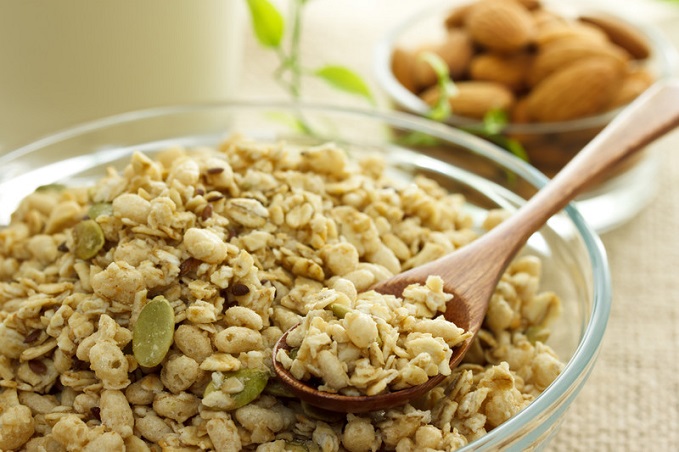It’s not a topic most people talk about, but constipation is a common ailment that can cause significant discomfort for those unfortunate enough to experience it.
Constipation can occur at any age, but it’s more common in women, particularly pregnant women, and older people.
Although people who are suffering from constipation often turn to over-the-counter laxatives to increase bowel movements, the problem with laxatives is that they cause the bowels to become “lazy” and more sluggish which isn’t the effect most people want.
The most natural way to treat constipation is through dietary changes. Here’s how to choose the best foods for constipation prevention and better bowel movements.

Foods for constipation
A recent study published in International Journal of Food Sciences and Nutrition showed that two ingredients – wheat bran and resistant starch – boosted bowel movements by up to thirty-five percent.
It’s not surprising that these ingredients are effective since they’re a good source of insoluble fiber.
Insoluble fiber draws water into the intestines softening the stools, so they’re easier to pass.
Resistant starch is a form of starch that isn’t digested by the stomach or small intestines and passes unchanged into the large intestine where it acts like a fiber.
Resistant starch also encourages the growth of probiotic bacteria and stimulates the production of short chain fatty acids that keep the walls of the colon healthy.
The key to better intestinal health? Eat foods for bowel movements that contain one of these two fiber-like components.
Wheat bran
You can purchase wheat bran in bulk at many natural food markets or in the baking section of most grocery stores. Wheat bran can be added to baked goods when baking cookies, muffins, and cakes or mixed in with hot or cold cereal in the morning.
An alternative way to get the benefits of wheat bran for treating constipation is to buy bran cereals that are high in fiber. A bowl of bran cereal every morning if eaten regularly is enough to increase bowel movements and relieve constipation for most people.
If you don’t like the taste of bran cereal, add fruit, nuts, and little honey or mix bran with a cereal you enjoy.
Legumes
Legumes such as beans and lentils have the highest concentrations of resistant starch of any foods.
Navy beans are one of the best sources with a half-cup containing almost ten grams.
Other good choices are lentils, baked beans, and split peas. Practically any bean you choose is going to have a fair amount of resistant starch.
The resistant starch found in beans and other sources not only increase bowel movements but can also help with weight control.
Whole grain cereals and seeds
Oatmeal, pearled barley, semolina sesame seeds, and other whole grain seeds and cereals are good sources of resistant starch that can help increase bowel movements and relieve constipation.
A morning bowl of oatmeal with added wheat bran is a great way to start the day and give the bowels the fiber it needs to function properly.
Other foods high in resistant starch
Raw bananas, potatoes that are cooked and allowed to cool before eating, and cold pasta are all excellent sources of resistant starch for treating the symptoms of constipation.
If you’re watching your carbohydrate intake, stick with the wheat bran, beans, and whole grains since these foods contain higher glycemic carbs.
Foods for constipation: the bottom line?
Skip the laxatives and try some of these suggested foods for constipation relief as natural ways to increase bowel movements. Keep in mind that constipation can sometimes be a sign of a medical problem, so see your doctor if it persists.